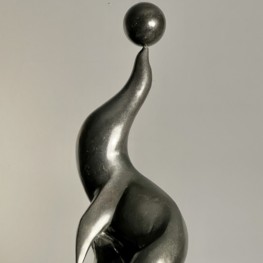Reuben Nakian
1897-1986
Born in College Point, New York, the son of Armenian immigrants, Reuben Nakian was a gifted sculptor who produced works in a variety of materials ranging from terracotta to steel. Though receiving little to no formal artistic education, he demonstrated a natural talent for draftsmanship and at the age of nineteen was offered an apprenticeship in Paul Manship’s studio. Working closely with Manship’s chief assistant, the French-born sculptor Gaston Lachaise, Nakian acquired training in the techniques of modeling, casting and patination.
From the two men, the budding artist also gained access to important art world figures. While sharing a studio with Lachaise in New York, Nakian came in contact with Juliana Force, the organizer of the Whitney Studio Club, and was awarded a generous living stipend. The artist had his first solo show there in 1926, and the following year became associated with Edith Halpert and the Downtown Gallery.
Throughout the 1920s, Nakian concentrated on animals as his primary subject matter. Inspired by a book on Spain’s Altamira cave drawings that he discovered at the Weyhe Book Store and Gallery, he created sculptures of bulls, rabbits, and seals until 1932, when he began producing portrait busts of contemporary artists. Although Lachaise was concurrently making animal-themed sculptures, it was Constantin Brancusi’s streamlined carvings and bronzes that informed the younger artist’s visual vocabulary. Rejecting the naturalism of his two mentors, Nakian mastered a stylized simplification of form that pushed toward greater abstraction.

